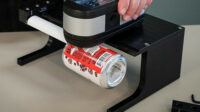Color
Overcoming Color Challenges in Plastics Manufacturing
Although color quality is important in any industry, plastics require special attention because of their diverse physical properties.
06ed.jpg?1743097429)
Image Source: Datacolor
Although color matters in many industries, plastics manufacturers face unique obstacles when it comes to maintaining color quality. Variability in raw materials and processing conditions make it difficult to ensure consistency from one batch to the next, especially when multiple masterbatchers or production locations are involved. In addition, getting the right formulation often means balancing color against competing demands such as strength, flexibility, chemical and thermal resistance, permeability, UV protection and other properties.
Digital color management can help reduce much of this uncertainty while simplifying or eliminating hurdles common to other types of manufacturing. From formulation to quality control (QC) of finished products, there are tools to help you achieve greater control over color accuracy, reduce waste, eliminate errors, and ease communication across your supply chain.
Why Color Control Matters for Plastics
If you go to a grocery store and notice that a bottle of ketchup’s color is lighter than the others, you probably won’t buy it. If you’re like most consumers, the unexpected color difference will lead you to avoid that bottle on the assumption that some quality issue has occurred or that the bottle contains older product.
As this example suggests, consistent color is essential to upholding a brand’s image and customer trust. Variations across different products or batches can lead to product rejections, increased waste, lost time and higher production costs.
Although color quality is important in any industry, plastics require special attention because of their diverse physical properties. They can be opaque or transparent, smooth or textured, glossy or flat, pearlescent or metallic. Further, they may need to match or coordinate with other materials like paint or textiles. The dyes, colorants and even raw materials used can vary, and sometimes need to survive stressful fabrication processes.
Visual evaluation by trained experts plays an important role in QC. However, natural differences in human color perception mean visual evaluation alone isn’t enough for a strong industrial color control program. Effective color QC requires specialized tools, software and techniques to objectively measure and manage color accuracy, maintaining brand integrity and product appeal.
Color QC Benefits Manufacturers and Suppliers Alike
Robust color QC programs are good for stakeholders at every stage of the production process. They ensure colors consistently meet specific standards across different batches, materials, facilities and supply chains.
For brands and manufacturers, rigorous color QC can ensure product consistency, brand integrity and customer trust. It helps to minimize costly errors and waste by detecting color deviations early, reducing the need for multiple rounds of samples and preventing defective products. Standard operating procedures (SOPs) for color management can enhance operational efficiency and supply chain coordination, leading to better overall business performance and customer satisfaction.
Good color QC programs are also essential for suppliers. They can ensure products meet client specifications and help build a reputation for reliability that supports strong business relationships. They also can reduce costly returns and rejections caused by color mismatches, minimize waste, and optimize production efficiency. As a result, suppliers remain competitive and better able to meet customer needs.
Sustainability Considerations
Digital color management can help plastics manufacturers become more sustainable by enabling them to achieve accurate first-shot colors, which optimizes material use and reduces waste.
Masterbatch errors often can’t be salvaged. If a color is incorrect, the entire batch must be disposed of. Precise color matching and formulation using digital tools can ensure that colors are right the first time, decreasing the need for trial and error while reducing the amounts of raw material and energy used in production.
Color management systems can enable the efficient replication of colors across different batches and materials, minimizing variations and the subsequent need for rework or disposal of off-spec products. Furthermore, these systems can facilitate the use of more sustainable pigments and additives by allowing manufacturers to simulate and test colors virtually before production, avoiding the environmental impact of physical trials.
Five Steps for an Effective Color QC Program
Building an efficient digital color QC program can help you formulate precise colors, maintain consistent quality, communicate more effectively with everyone involved in the production process, and shorten your time to market. Here are five steps to help establish successful color management across any plastics manufacturing operation.
Step 1: Define Objectives and Requirements
Identify the primary goals of your program, such as ensuring masterbatch consistency, minimizing waste, or fulfilling customer specifications. Setting clear objectives can help align color quality initiatives with your overall business strategy.
Next, establish the use of either physical or electronic color standards and choose the acceptable tolerances that conform to industry norms or customer expectations. Physical standards should be properly cared for to maintain their color integrity. Master standards are often stored in freezers or dark, dry storage areas to prevent production colors from shifting over time.
Processes and procedures should be meticulously documented, detailing acceptable color variations for all products. This documentation can serve as a reference point for key stakeholders, ensuring that everyone is working with the same color quality expectations.
Step 2: Establish SOPs
SOPs are the backbone of any QC program. Developing comprehensive SOPs for color measurement and QC processes can help ensure consistency and accuracy. These procedures should detail every step, from evaluating raw materials to sample preparation, measurement techniques and data recording.
Training personnel on these SOPs is equally important. It’s vital for everyone involved to understand the proper use of measurement instruments and software. Review and update your SOPs regularly to incorporate new technologies, methods and feedback from your QC team to keep procedures relevant and effective.
Step 3: Select Appropriate Tools and Technology
Certain physical properties of plastic can make it challenging to measure color accurately. Reliable instruments such as spectrophotometers are therefore essential for precise color measurement. These devices should be selected based on the specific needs of your operation, considering factors like customer tolerance requirements, material properties (such as the impact of gloss, opacity and texture on appearance) and production environments.
Spectrophotometers capture precise color data, which is used to formulate and replicate colors exactly across different production runs. With this data, you can set standards, perform QC checks of samples, and maintain product color consistency over time.
Benchtop spectrophotometers deliver the greatest precision and stability. These stationary instruments offer the highest accuracy, a wider range of wavelengths and can measure larger samples, making them ideal for QC in laboratories and design studios.
Some high-quality benchtop instruments can measure temperature, ensuring that a sample has cooled to spec prior to measurement. This helps to avoid inaccurate measurements resulting from thermochromism — temporary color shifts that can occur when plastics are heated or cooled. Specialized models are also available for complex color measurement tasks, such as multi-color, textured, small or irregularly shaped samples.
Smaller, portable spectrophotometers are used in scenarios where mobility and convenience are essential. These devices allow quick and efficient color accuracy checks against standards during production without needing to send samples back to a lab for analysis. Their ease of use, compact design, and abilities to store and transfer data make them versatile tools for many applications where immediate, on-the-spot analysis is required.
Advanced color formulation and QC software that connects with your measurement instruments can streamline data analysis, reporting and tracking processes. These applications help you develop, visualize and communicate color accurately and objectively throughout a supply chain to eliminate guesswork.
Color management software can provide superior first-shot color matches and optimize your recipes to achieve desired results. It also helps you pivot with agility when supply chain disruptions or governmental regulations limit or change the ingredients available to you. Once standards are established, the software can analyze samples for color variations and guide adjustments in your manufacturing process to maintain color consistency.
Another advantage of color software is the ability to integrate and streamline production processes for greater efficiency. For example, software integrations can leverage data within enterprise resource planning (ERP) or product lifecycle management (PLM) systems. This improves efficiency by automatically transferring data between systems, reducing opportunities for human error. Color management software can also suggest optimized formulas that account for ingredients currently on hand or specified price points.
Spectrophotometers and color management software are used together to create digital standards. Unlike physical standards, these digital standards aren’t at risk of degrading over time and don’t require a freezer or darkroom for storage. They can be exchanged quickly and easily among brands, manufacturers, suppliers and other stakeholders. This fast and effective data communication maximizes time and cost savings by preventing the over-development of custom color formulations, removing the need for physical samples and allowing data-driven color decisions to be made swiftly, no matter where your teams are located.
Although digital color QC tools can help you get color right the first time, physical evaluation in a lightbooth is still important to make sure the colors you set out to achieve visually match the output.
Step 4: Implement a System for Monitoring and Reporting
Ongoing monitoring and real-time reporting are essential for ensuring your SOPs are being followed, tracking how frequently colors are being rejected, and maintaining high color quality standards. Robust monitoring systems that evaluate raw materials and test products at various stages of production can help detect and address color deviations promptly.
Automating the reporting process with software solutions can provide real-time data and analytics, offering insights into color quality performance. Feedback loops that share this data with production teams can ensure that any issues are swiftly addressed, maintaining consistent color quality throughout the production process.
Step 5: Conduct Regular Audits and Make Continuous Improvement
Regular audits can ensure compliance with SOPs while identifying areas for improvement. In addition, gathering feedback from customers and internal stakeholders can provide valuable insights into color quality, guiding informed adjustments to the program.
Ongoing employee training is also essential. Promoting a culture of continuous improvement can encourage innovation and keep your organization informed about the latest advancements in color measurement technology and QC practices. This proactive approach not only can enhance product quality but also strengthen your overall color QC program.
Digital Color Tools Make Higher Standards Possible
By following these key steps, your operation can establish a strong digital color QC program that ensures product consistency, meets customer expectations, and supports continuous improvement.
In addition, integrating digital color management solutions into your QC systems will enable you to monitor and control color attributes more closely, reducing variability and ensuring that each batch meets set color standards. This systematic approach to color management can produce consistent product quality and customer satisfaction while reducing waste, speeding your response times, enhancing your reputation for quality, and helping you operate more sustainably.
Looking for a reprint of this article?
From high-res PDFs to custom plaques, order your copy today!





